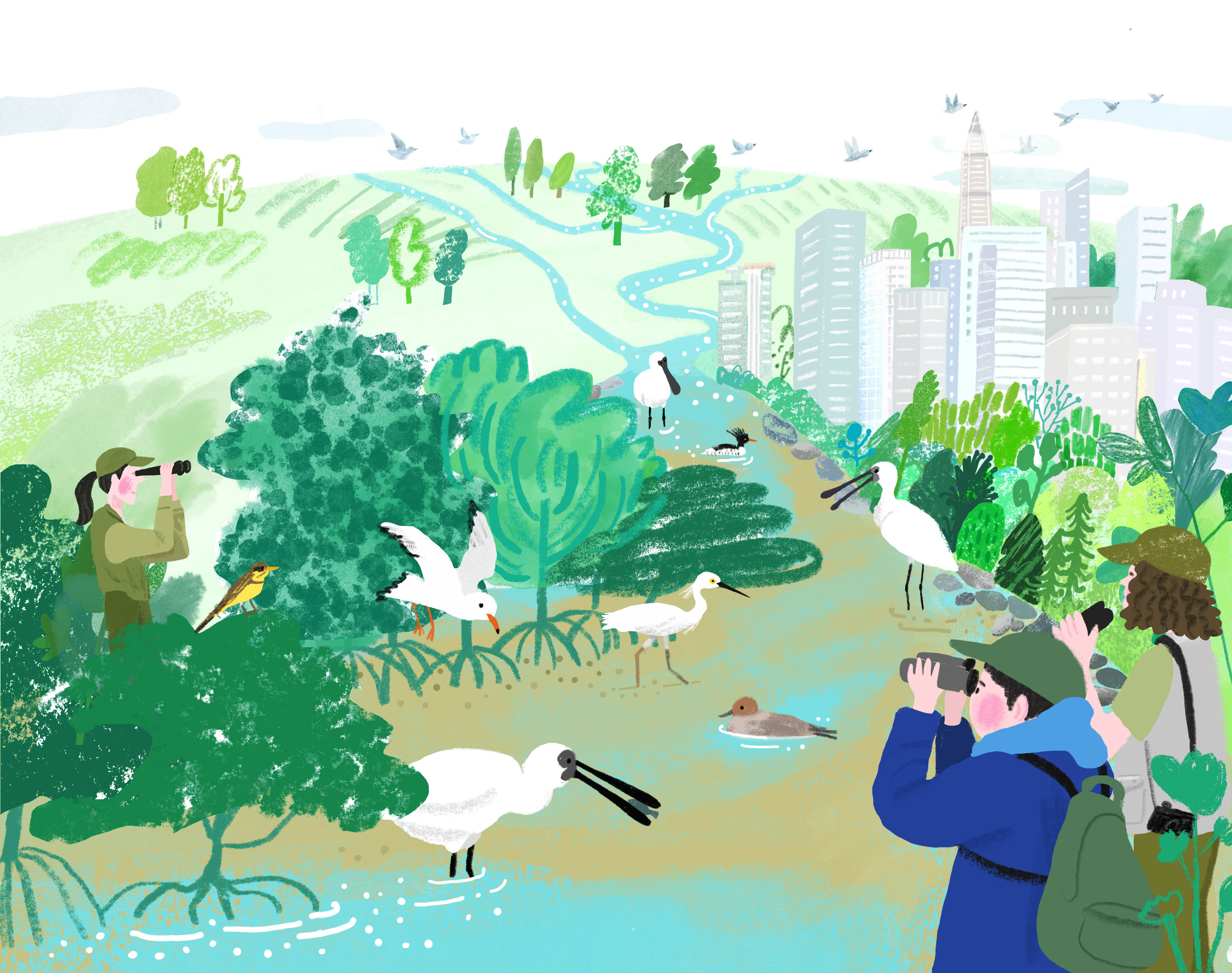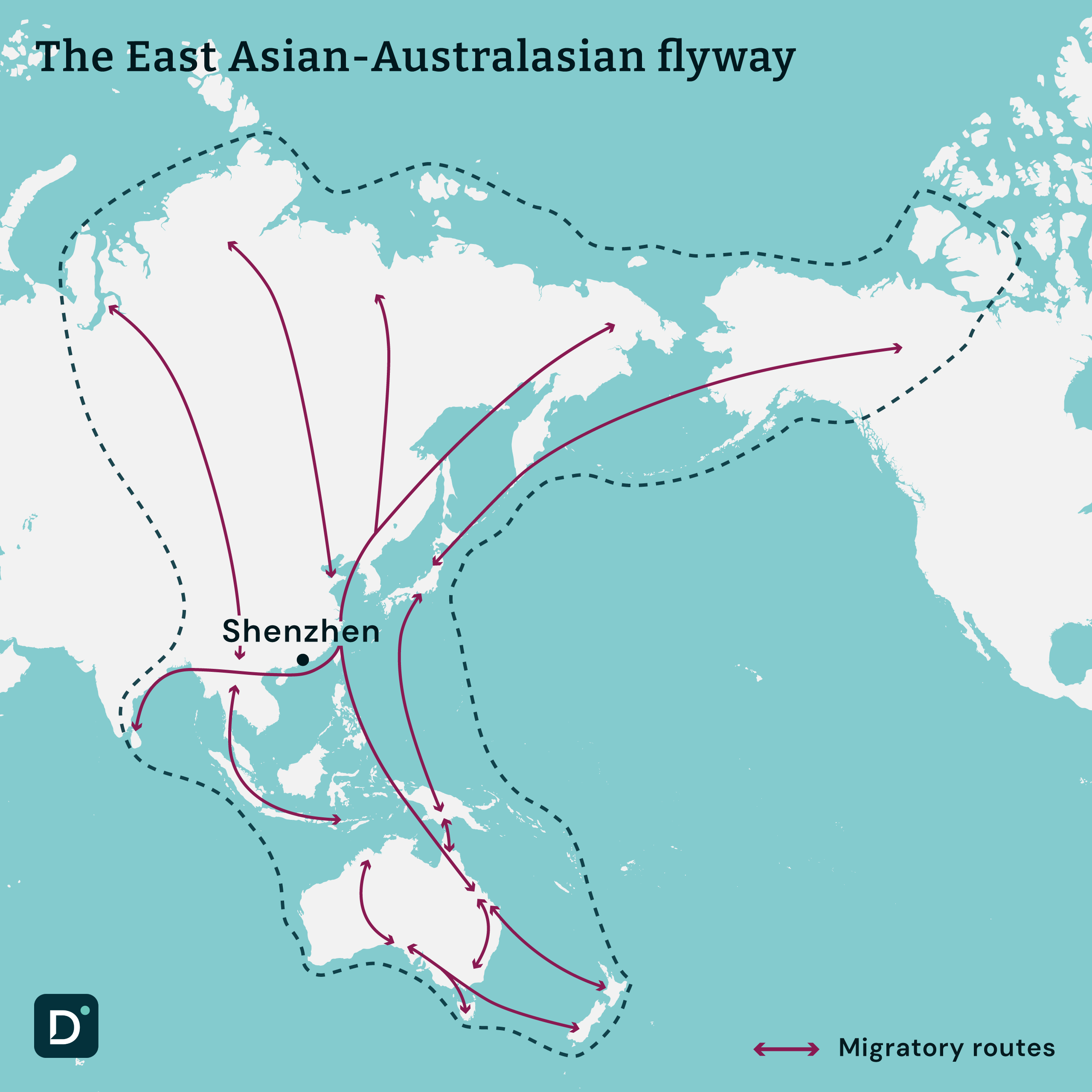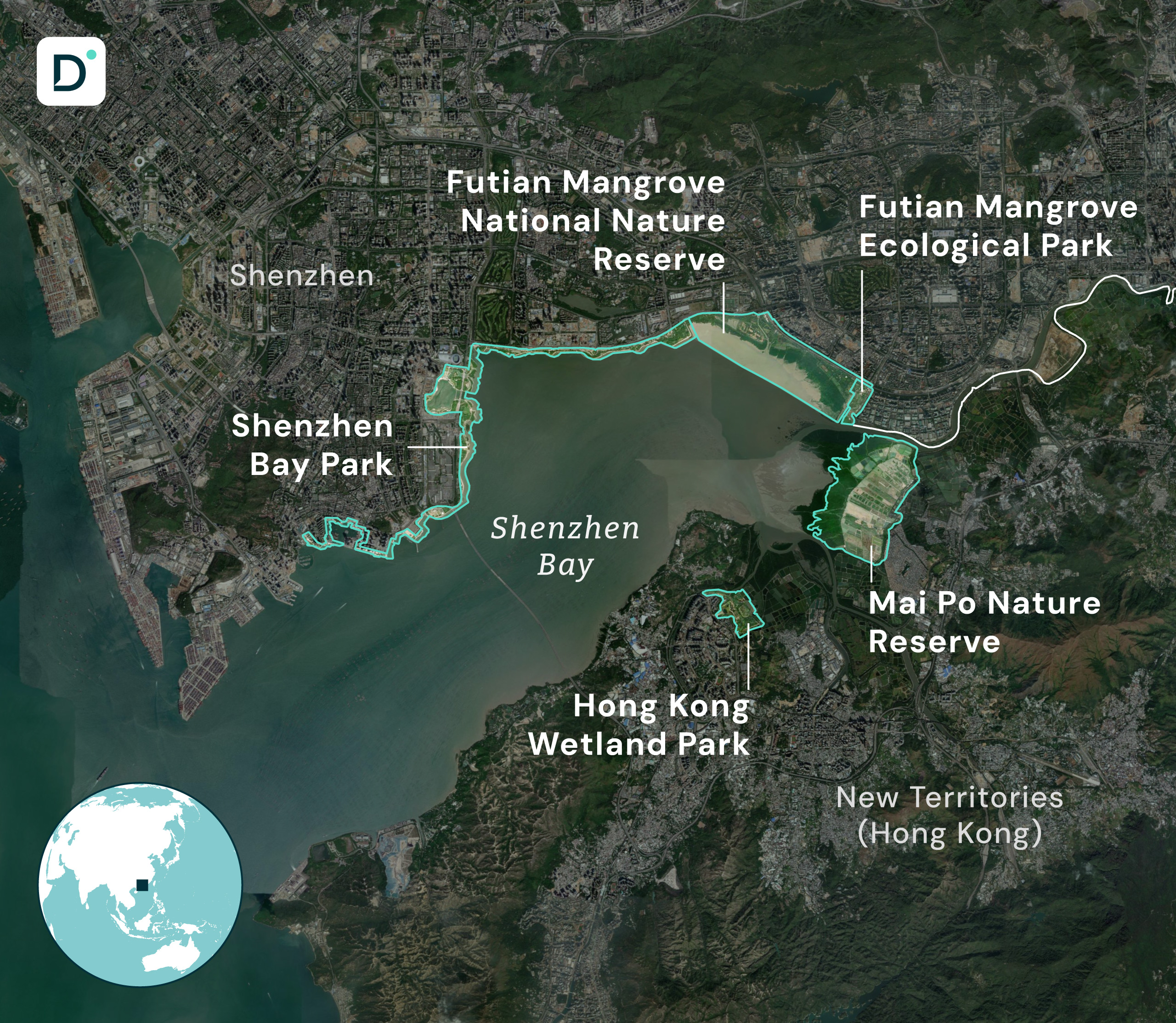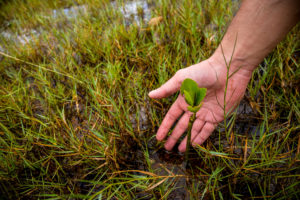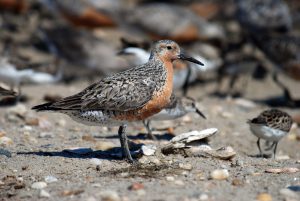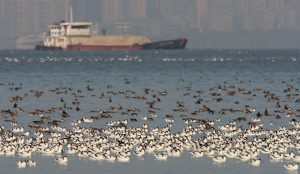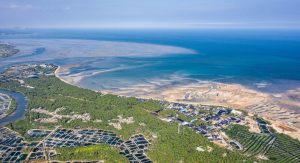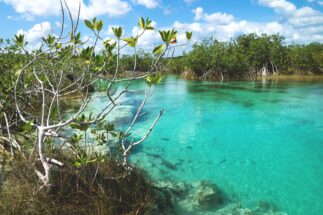Each spring, as Shenzhen’s mangroves burst into life, the region becomes a prime spot for birdwatchers observing the endangered black-faced spoonbill. Known as the giant panda of birds, this species winters in Shenzhen Bay from October to April, in preparation for its northbound migration.
Shenzhen Bay, located in southern China and part of the Pearl River Delta expanding into Hong Kong, is a crucial stop-off point for migratory birds using the East Asian-Australasian flyway. The mangroves support over 200 species of birds and host 100,000 migratory birds each winter, drawing enthusiasts and scientists alike to witness these natural spectacles against the backdrop of one of China’s most bustling urban settings.
Amid the rapid urbanisation that defines modern China, Shenzhen stands out not just for its “futuristic” skyline, but also for its efforts to reassert its ecological priorities. After significant mangrove losses due to aggressive development, Shenzhen’s mangrove recovery has been “unprecedented”. This resurgence earned one of its wetlands a designation of international importance under the Ramsar Convention in 2022.
The city’s approach to conservation, involving robust policy enforcement and community engagement, illustrates how urban areas can successfully integrate significant ecological habitats, reversing ecological decline in vulnerable delta regions.
Historical ecological decline
Shenzhen’s transformation from a quaint fishing village in 1979 into a bustling international metropolis epitomises China’s rapid urbanisation. As the country’s first special economic zone, it spearheaded economic reforms, but at a significant environmental cost. Extensive land reclamation for commercial and residential development drastically reduced mangrove habitats to a low of 50 hectares in 1991.
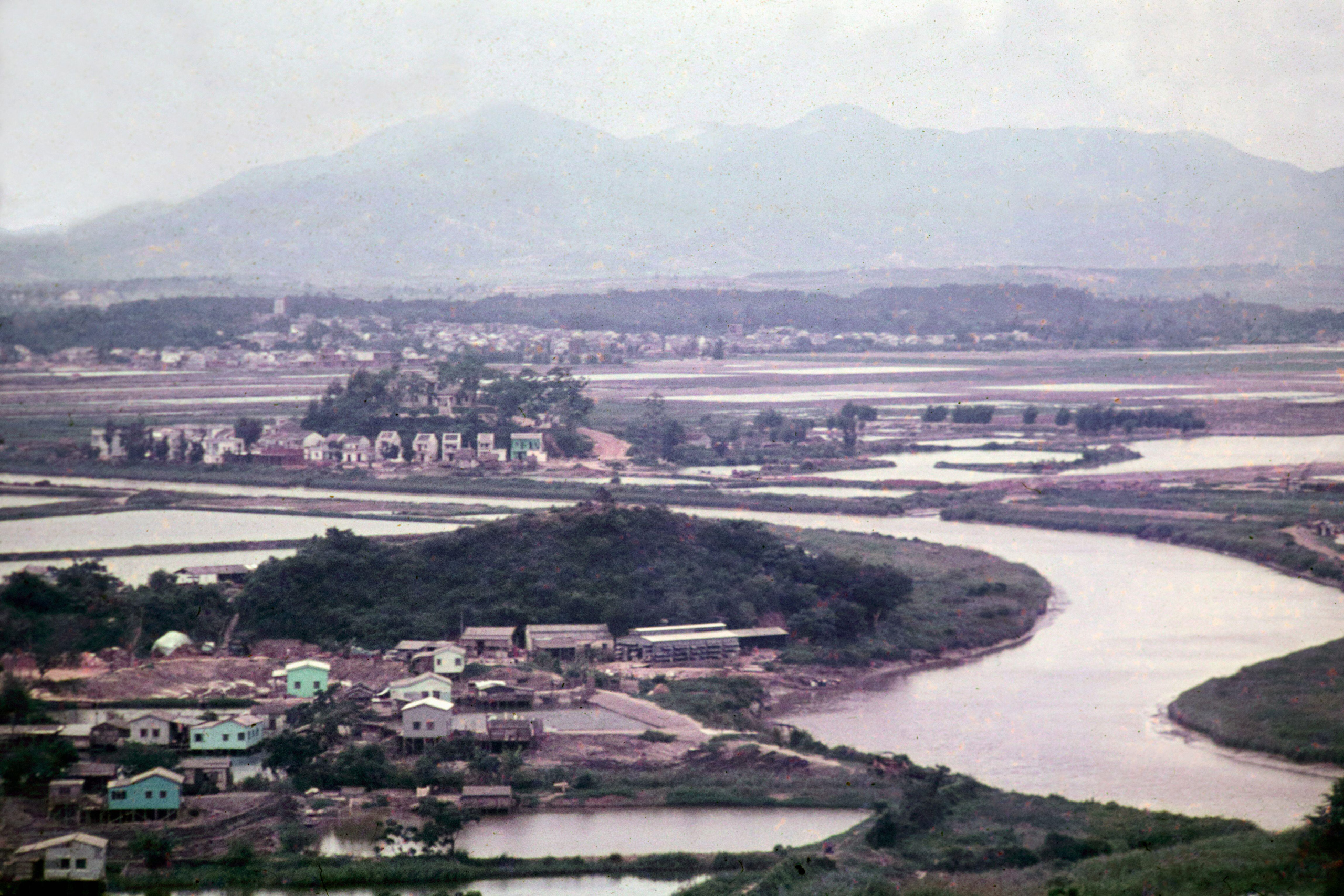


The introduction of non-native, quick-growing tree species like Sonneratia apetala, intended as a quick-fix for mangrove restoration and coastal stabilisation, resulted in excessive growth and disrupted native biodiversity. This proliferation created destabilising monocultures, obstructed flood discharge channels and increased waterlogging, complicating flood management efforts.
Restoration efforts and policies
Shenzhen’s 260km-long coastline, fortified by mangroves, serves as the first line of defence against climate-related disasters. However, environmental stressors such as floods and waterlogging have undermined the coastlines’ structural integrity, diminishing the mangroves’ protective role.
Recognising this vulnerability, the city authorities reversed course in the 2020s, embracing a strategic approach that included selective tree reduction. Haichao Zhou, an associate researcher at Shenzhen University, serves on the conservation panel that recommended a nature-based restoration plan. This strategy, focused on systematically removing fast-growing invasive species, was recently adopted by the local government.
According to the city’s 2023 environmental report, Shenzhen created 12.72 hectares and restored 13.08 hectares of mangroves in 2022 by selectively cutting fast-growing Sonneratia apetala. Although this resulted in a brief fall in overall mangrove cover, it facilitated the regrowth of native species, enabling them to recolonise the wetlands.
“Through careful management practices such as those adopted in Shenzhen, including judicious thinning, selective logging and maintaining suitable hydrological conditions, native species can naturally recover, enhancing mangrove diversity,” Zhou told Dialogue Earth.
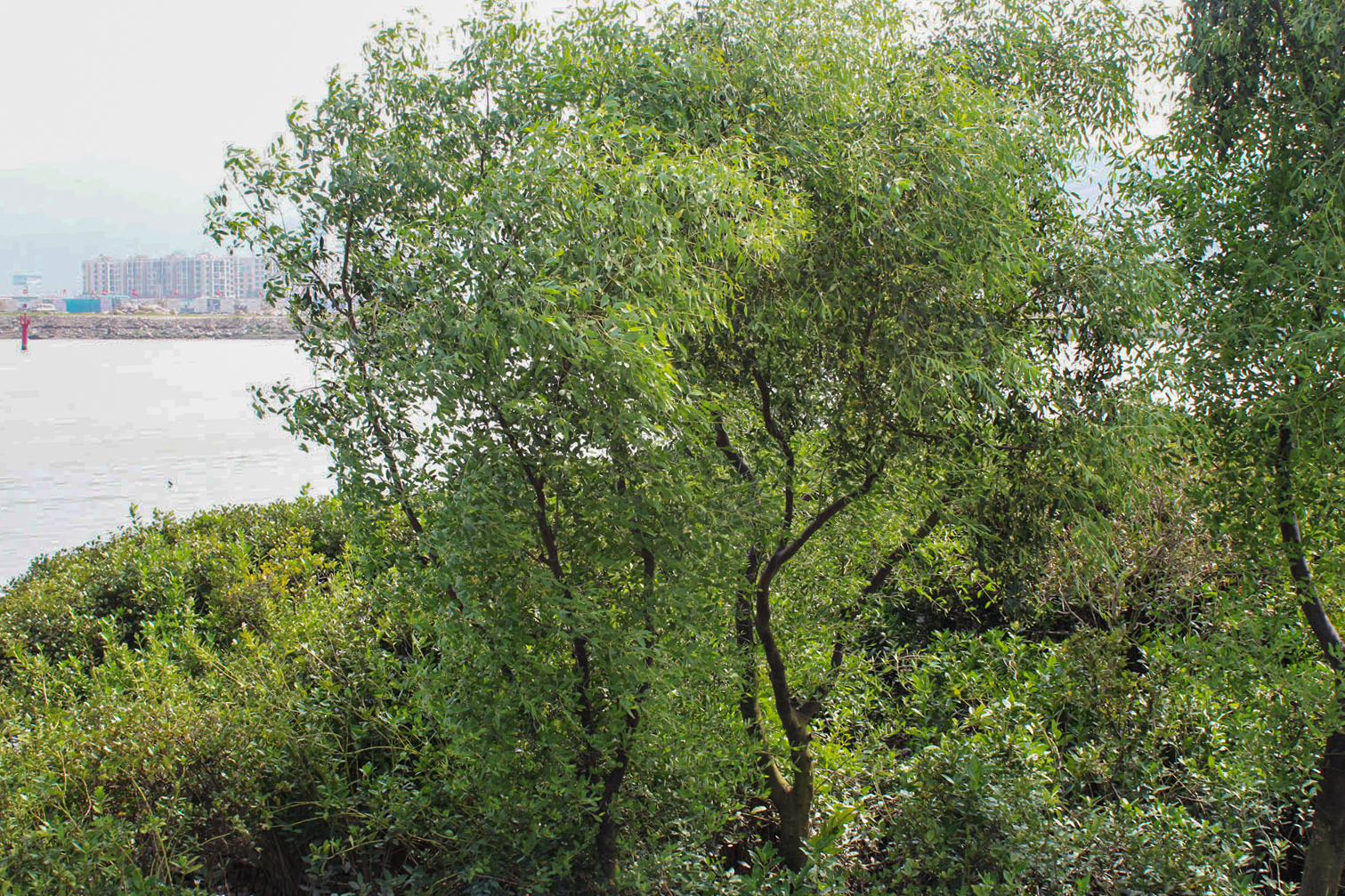

Central to Shenzhen’s success in restoring its mangroves is an integrated management strategy, combining a unique governance model with strict regulatory measures. Since 2018, the enforcement of land reclamation bans, which prohibit new coastal reclamations, particularly around mangrove forests, have significantly contributed to their protection.
The 2021 National Wetland Law further bolstered conservation efforts by providing a strong legal framework, which also prohibited unauthorised land reclamation, set “ecological redlines”, promoted mangrove restoration and sustainable use of wetland resources. The law mandates strict penalties for violations and underscores the importance of wetland biodiversity. In Futian district, mangroves have also proven effective in treating municipal sewage, demonstrating the multifaceted benefits of integrating natural ecosystems into urban infrastructure. Today, the city boasts nearly 35,000 hectares of wetlands, with 296.18 hectares reserved for mangroves.
The largest concentration of mangroves, covering around 100 hectares, is found in the Futian Mangrove National Nature Reserve. It forms a critical ecological corridor, connecting fragmented mangrove areas across urban spaces, facilitating bird migration, improving their survival rates and serving as natural barriers against urban encroachment.
Between 2000 and 2022, mangrove cover across Shenzhen Bay expanded significantly from 281.51 to 526.43 hectares, countering the global trend of mangrove loss.
Multi-stakeholder collaboration
East of the Futian nature reserve is the Futian Mangrove Ecological Park, a pioneering model of public resource management, highlighting the effectiveness of multi-stakeholder collaboration. Managed by the Mangrove Conservation Foundation (MCF) since 2015, it is China’s first government-mandated park managed by an NGO.
The MCF, founded in 2012 with support from 32 entrepreneurs and the Society of Entrepreneurs and Ecology – China’s first NGO formed of entrepreneurs dedicated to ecological protection and social responsibility – features a governance model with publicly elected trustees, ensuring robust accountability and community involvement.
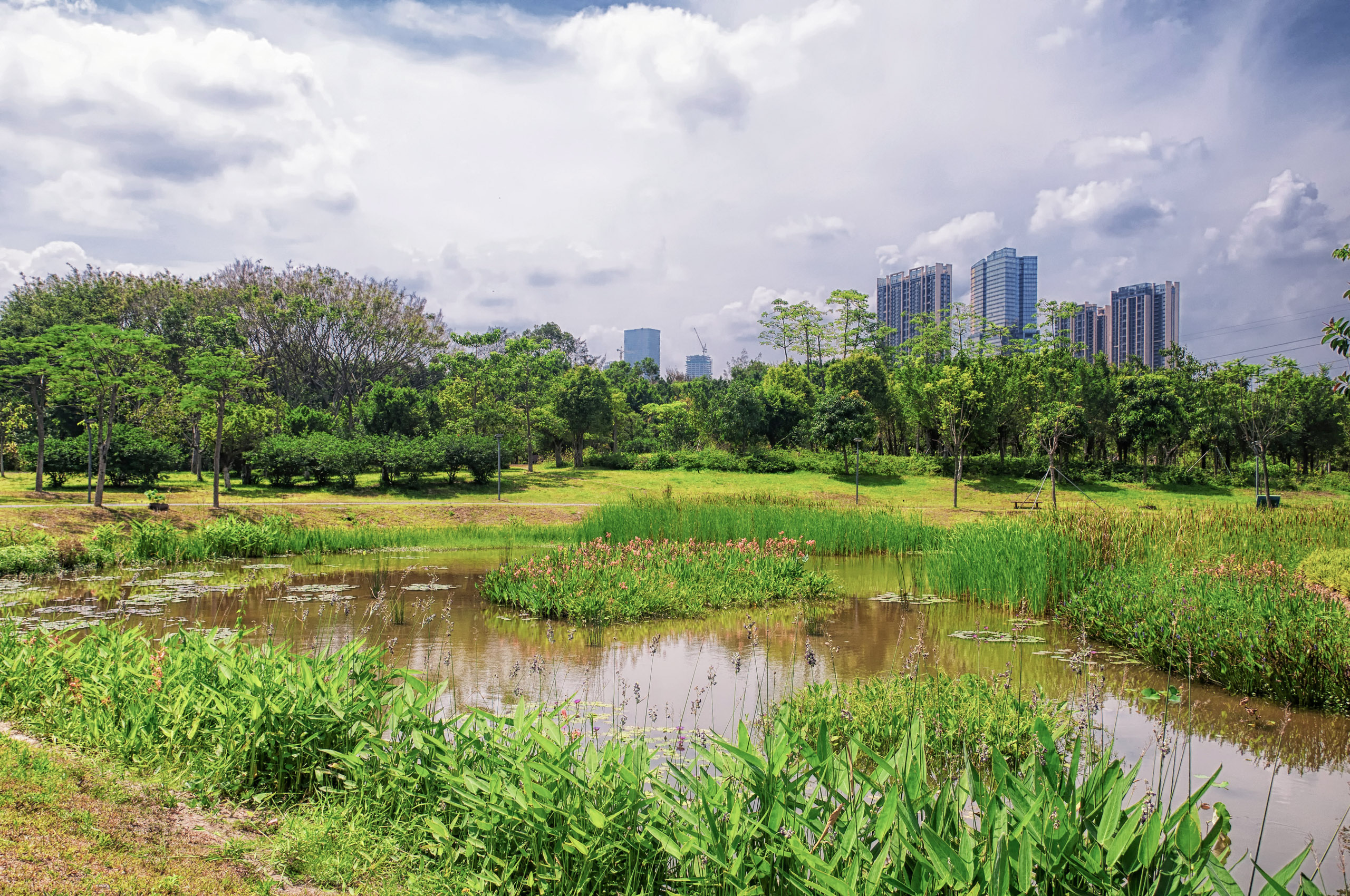
Baohua Yan, the MCF’s secretary general, emphasised the foundation’s role in bridging conservation efforts between Shenzhen and Hong Kong, repurposing traditional fishponds, known as gei wai, into high-tide habitats for birds. “As gei wai aquaculture practices are no longer conducted in Futian Mangrove Nature Reserve, fishponds now require adjustments and adaptations from the ‘perspective of birds’,” she told Dialogue Earth.
Inspired by techniques from Hong Kong’s Mai Po Nature Reserve, the restoration of gei wai fishponds in the Futian nature reserve has converted them into diverse bird habitats, leading to an additional population of 28 water bird species and 13,737 individual birds.
“Shenzhen Bay has limited wetland space, it is unlikely that developed areas will be reconverted into wetlands. Our actions are aimed at maximising the ecological functionality of existing wetland resources,” said Yan.
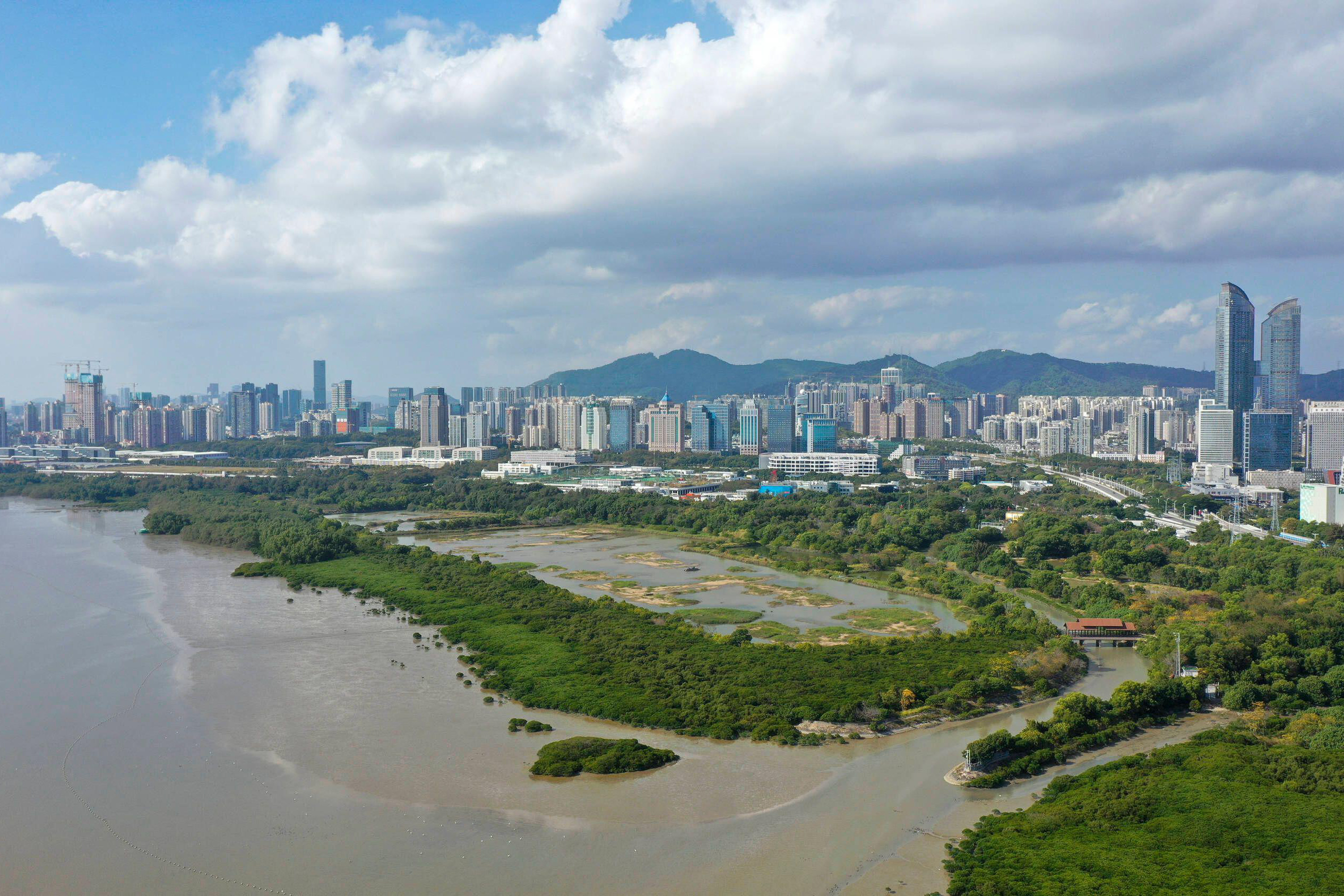
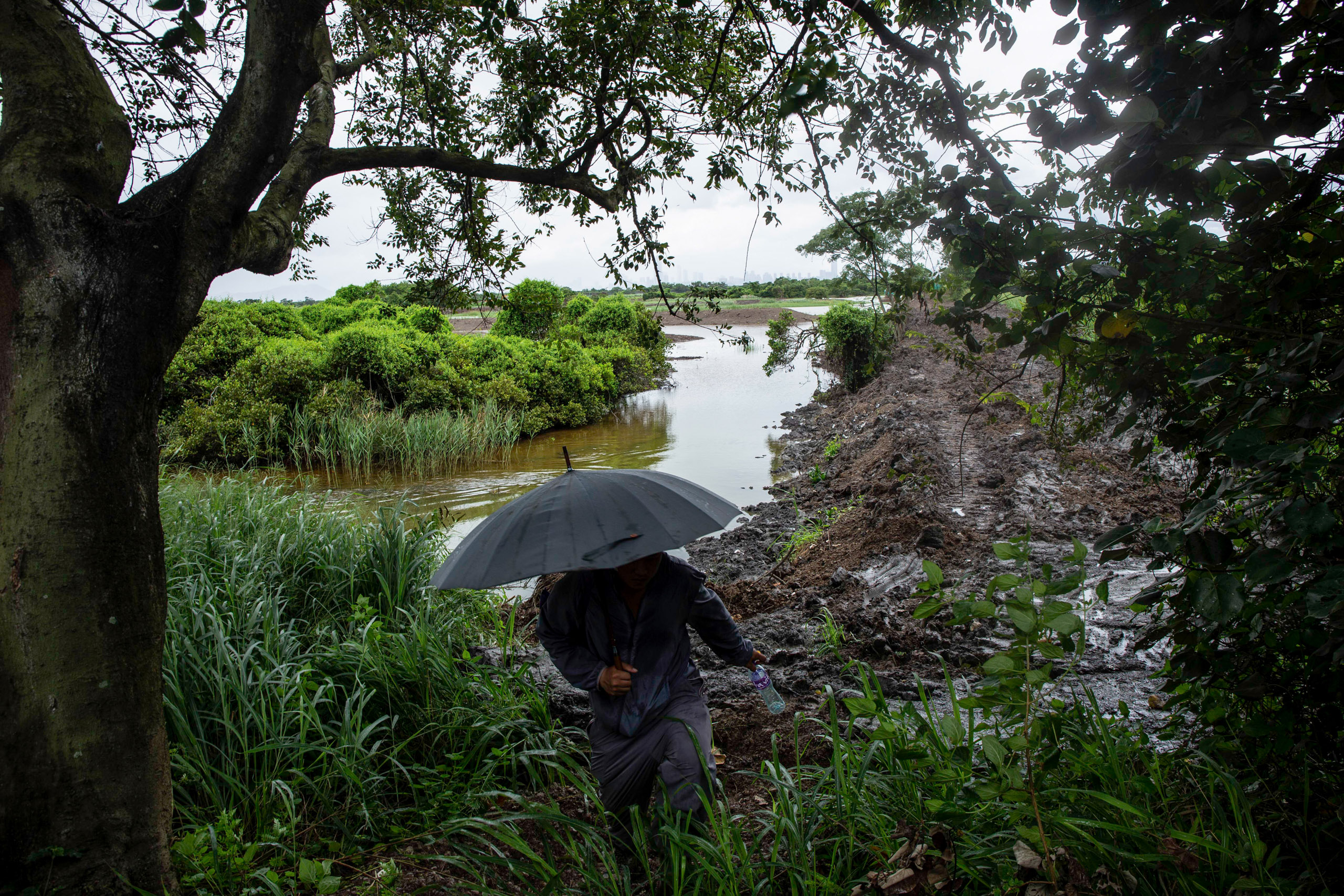
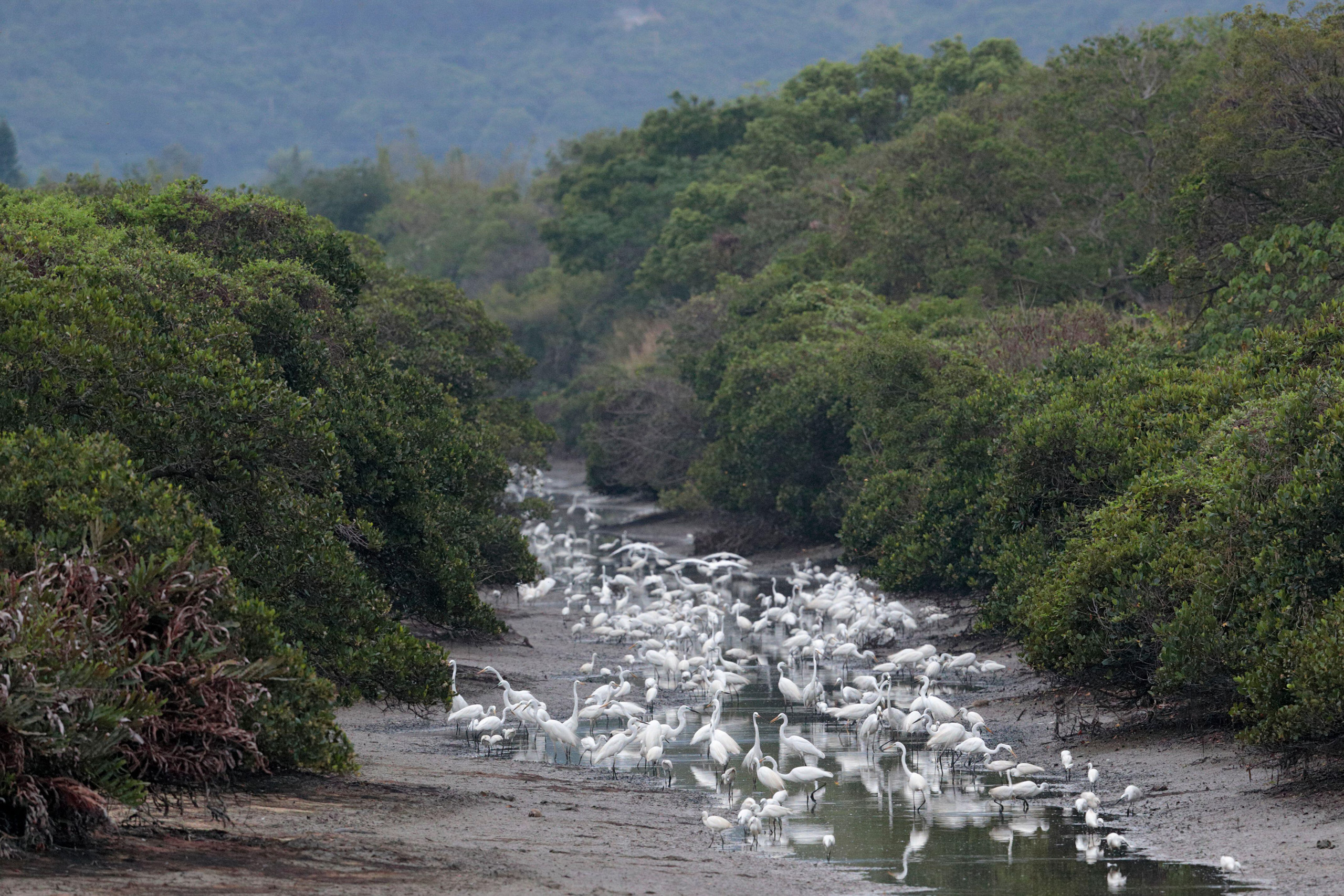
Lili Sun, founder and deputy board chairwoman of MCF, has championed this innovative social participation model “to strengthen conservation efforts and enhance public resource management”.
The government oversees the park to ensure compliance with environmental policies and standards, providing support in funding, resources and technical assistance. This public-private partnership combines government oversight with NGO flexibility to achieve sustainable public resource management.
“Our work in managing the park and our involvement in community outreach illustrate the vital role NGOs play in bridging government efforts with public interest,” explained Sun. This engagement has increased local and visitor participation in birdwatching, leading to dedicated groups across Shenzhen. Today, Shenzhen boasts 10 provincial-level nature education bases, 22 nature schools and 27 nature education centres.
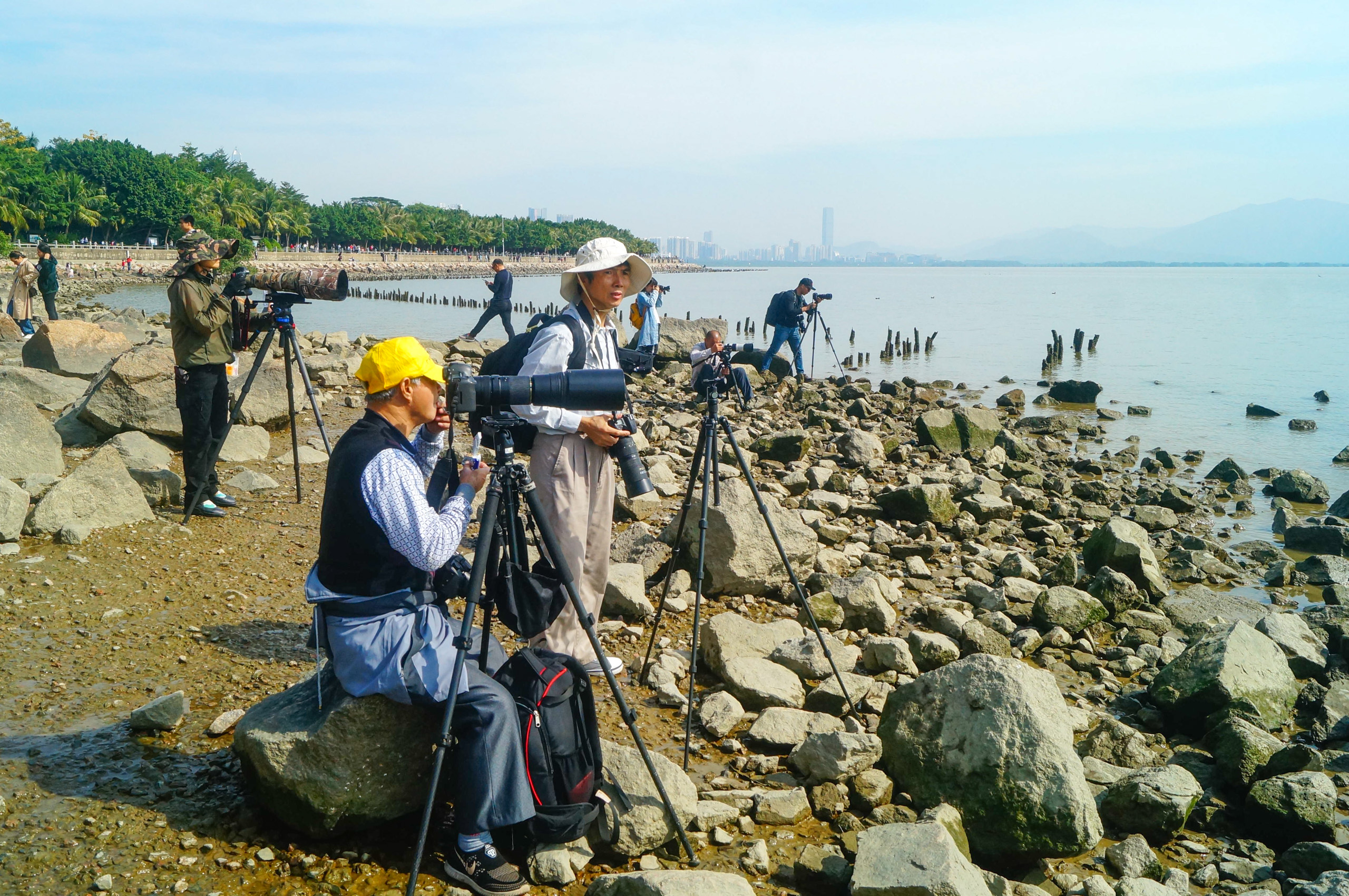
Sun’s comments were echoed by Yuying Ouyang, a local volunteer and nature-based educator. She told Dialogue Earth that increased birdwatching has raised awareness about mangrove wetlands. For example, public opposition successfully halted a local, controversial 2020 tourism cruise dredging project, which threatened mangroves and migratory birds, demonstrating the vital role public awareness and nature education play in conservation efforts.
“The public might have a different attitude towards cruise tourism without birdwatching and nature education,” said Ouyang. “They wouldn’t otherwise understand the significance of preserving a stretch of muddy flats.”
Assessing the success of restoration efforts
A key indicator of Shenzhen’s mangrove restoration success is the resurgence of the black-faced spoonbill population in Shenzhen Bay. Once critically endangered, this species now benefits from improved habitat conditions.
“During the 1980s, the global population of black-faced spoonbills dropped to fewer than 300 individuals. However, concerted conservation efforts across their migratory range have proved hugely successful,” explained Qijie Zan, a mangrove expert from the Futian nature reserve. A 2023 census reported a record 6,633 of these birds globally, with Shenzhen Bay alone hosting 299, making it the world’s third-largest habitat for the species.
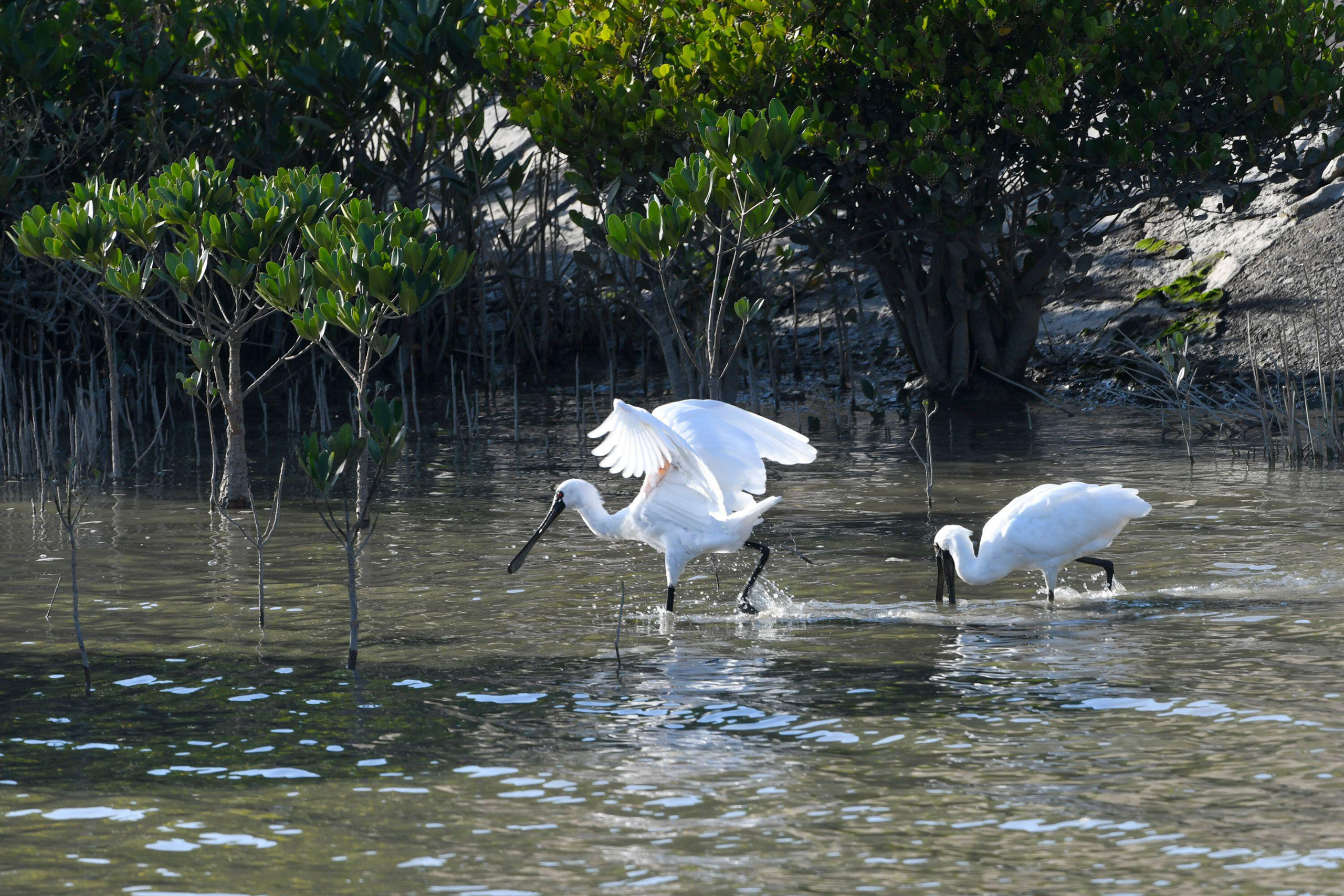
Beyond wildlife benefits, mangroves offer critical ecosystem services such as coastal protection, carbon sequestration and water purification, contributing to climate change mitigation and resilience against natural disasters. According to one government report, every 100 hectares of mangroves in Shenzhen Bay absorbs nearly 4,000 tons of carbon dioxide annually. The rerouting of rain and sewage flow has improved water quality, increasing animal and microbial diversity and enhancing the ecosystem’s resilience against extreme weather events.
“Shenzhen’s comprehensive approach to environmental management has positioned it as a leader in urban sustainability,” said Ma Jun, director at the Institute of Public and Environmental Affairs (IPE), an environmental organisation based in Beijing. Shenzhen has one of the lowest pollution rates in China. “Shenzhen’s initiatives have helped it perform very well on the [IPE] Beautiful City Index, underscoring the city’s role as a model for others to follow,” Ma added.

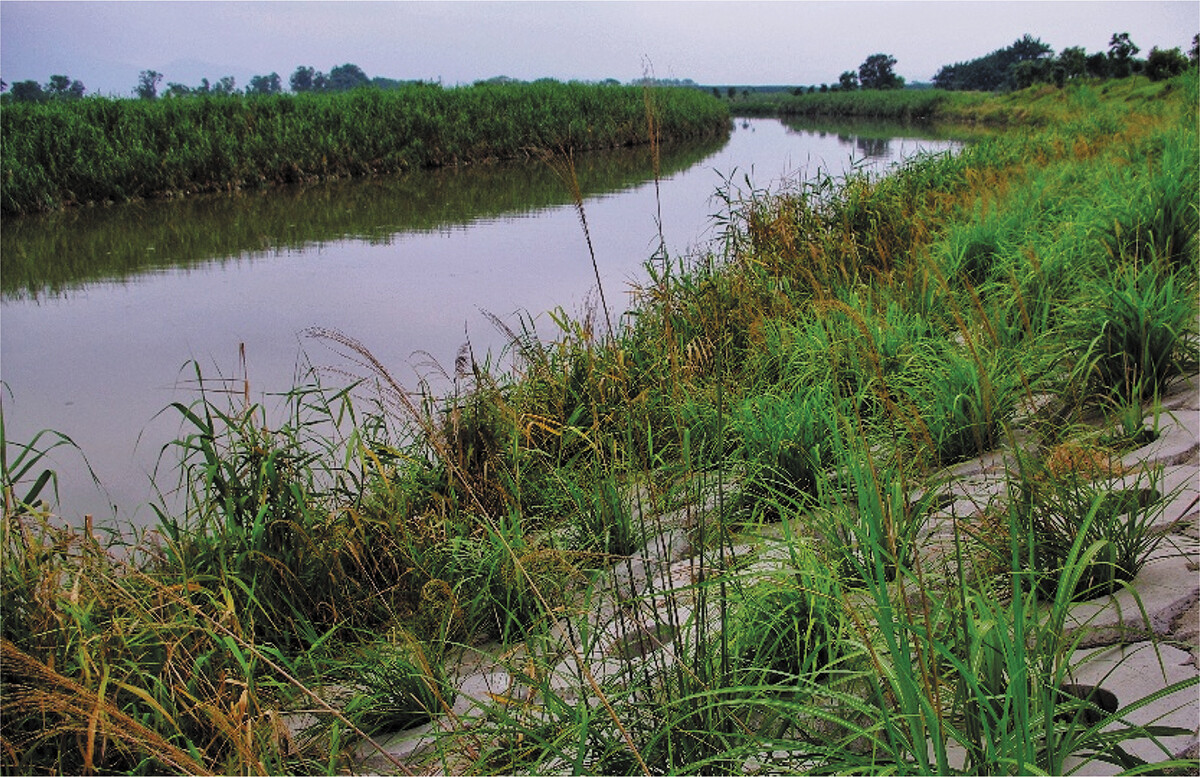
A positive side-effect of a population invested in birds is the shift in public attitudes towards conservation, subsequently influencing government policy on habitat preservation. In June, China’s National Development and Reform Commission released an action plan for migratory bird flyway protection and restoration, addressing critical challenges in southern China’s wetlands, including human interference, habitat fragmentation, degradation and invasive species. The plan aims to protect 90% of habitats along migratory bird flyways by 2030, establishing a comprehensive national conservation network.
There has been an increase in birdwatching that is not unique to Shenzhen. The number of birdwatchers across China has increased more than tenfold in the past decade, with the 2023 census putting the number of birdwatchers at 340,000, up from 20,000 in 2010.
Lu Li, head of the Wild Bird Society, a Beijing-based birdwatching group, highlighted the growing impact of this trend. “As birdwatching becomes more popular, people’s attitudes towards bird conservation and habitat protection improve,” she said. In places like Yunnan, Jiangsu and Beijing, birdwatchers have played a significant role in shaping policy advocacy and planning. She told Dialogue Earth: “Now, when the government undertakes certain projects, there is an increasing consideration to preserve habitats for birds.” Ultimately, what benefits birds also benefits people.
Future challenges to conservation efforts
Despite Shenzhen’s successes, multiple threats to its mangroves and bird populations remain. As the city expands, the pressure on natural habitats continues to intensify.
Sponge cities are one innovative solution that has emerged. These aim to address stormwater run-off in urban areas through green infrastructure, such as permeable pavements, green roofs, rain gardens and constructed wetlands. These measures help to prevent flooding and reduce pollutants that can harm waterways including wetlands and mangroves.
Jianbin Shi, a wetland expert at the Paulson Institute, noted that “industrial wastewater is perhaps the greatest threat to wetlands,” across the Pearl River Delta, where birds also face risks from colliding into skyscrapers. Historically, land reclamations have been used to curb rising house prices, a temptation that could return with increasing population pressures, despite existing regulatory bans. Although for now, the opposite seems to be true. Despite beating expectations with 5.3% GP in 2023, China’s economic recovery remains unsteady. With fewer houses being sold, the government is currently focused on encouraging house buying rather than resorting to land reclamation.
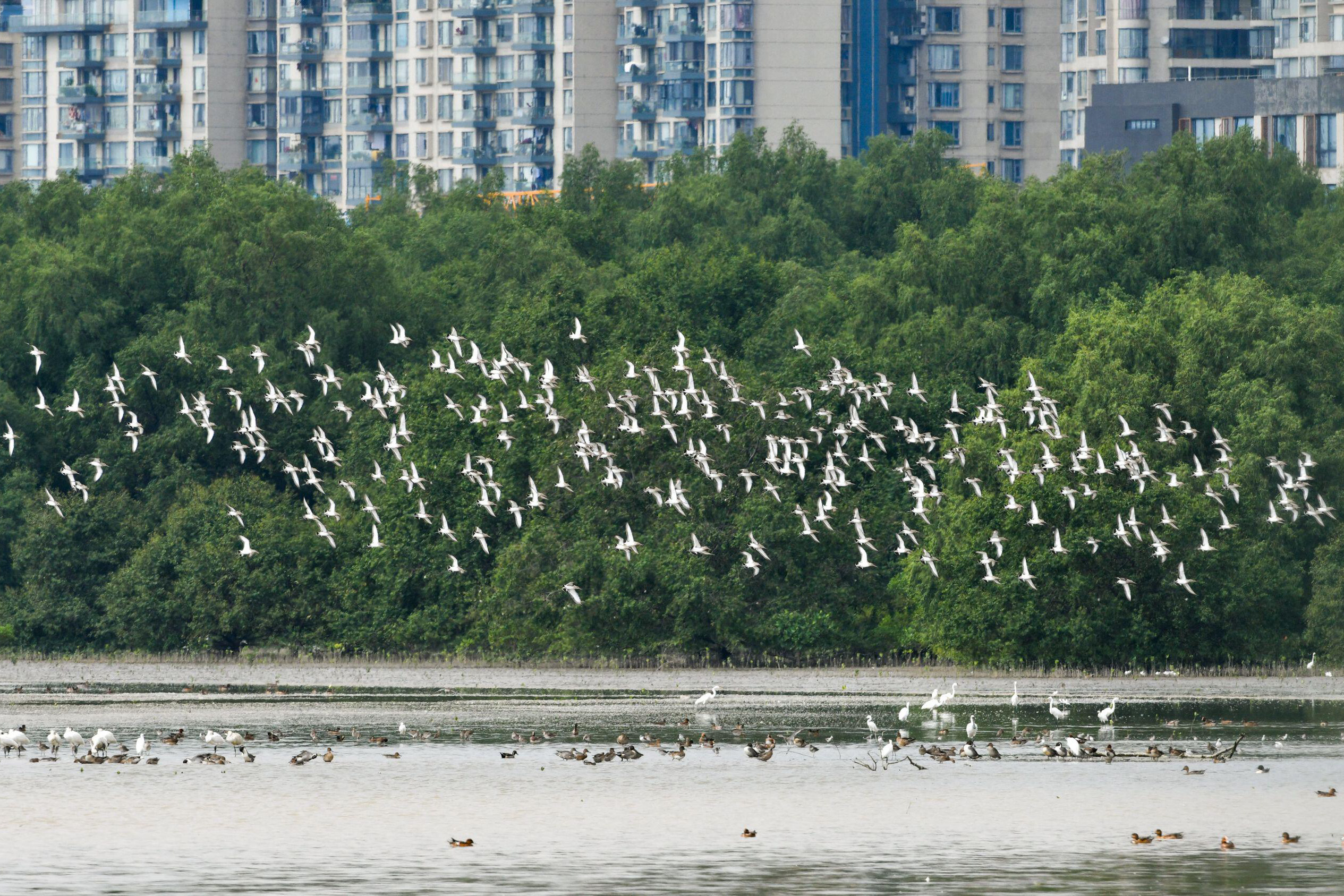
The long-awaited Shenzhen Wetland Protection Plan (2021-2035), which aims to enhance wetland protection and establish Shenzhen as an international wetland city, is still being drafted; a finalised version is not expected before July 2024. Making it available to the public will foster accountability and assist in strategic planning. Accelerating the timeline for the world’s first international mangrove centre, to be built in Shenzhen in collaboration with Ramsar, would also help.
Addressing these challenges will better position Shenzhen to navigate the complexities of urban development while maintaining its commitment to mangrove protection. In the meantime, ongoing public engagement and education programmes will help sustain conservation efforts, making environmental preservation a shared responsibility. The Futian Mangrove Ecological Park offers a template that promotes transparency, community participation and scalability for broader application in China and beyond.
Ma Jun emphasised the importance of continued commitment: “Shenzhen’s environmental strategy serves as a blueprint for sustainable urban development. Continued efforts in public education and technological integration will be crucial for future success.”
This article is a collaboration between Dialogue Earth and the Wilson Center’s China Environment Forum.
Correction note: The image of Aegiceras corniculatum above has been changed. The original image was incorrect and showed Lumnitzera racemosa, a different species of mangrove also native to the area.
